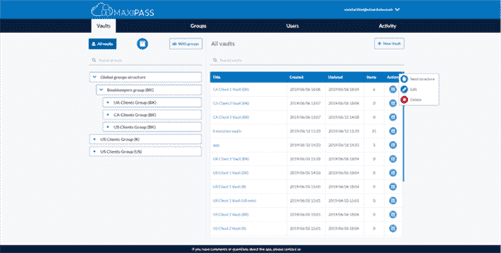ZFS Free Space Oracle Solaris 11 Hands-on Labs
Contents
I know I can mount it as read-only but that defeats the purpose of what I want to do as I want to be able to write data to copy/paste data in its mountable platform interface. The -s option to zfs get enables you to specify, by source value, the type of properties to display. This option Front-End vs Back-End vs Full Stack Web Developers takes a comma-separated list indicating the desired source types. Only properties with the specified source type are displayed. The valid source types are local, default, inherited, temporary, and none. The following example shows all properties that have been locally set on pool.

The following example shows how to display tank/home/chua and all of its descendent datasets. Property names that begin with “com.sun.” are reserved for use by Sun Microsystems. For example, a directory might contain files foo, Foo, and FOO.
Pool Related Commands
If a ZFS pool/filesystem is not mounted on your computer, the mounted property will be set to no. In this article, I am going to show you how to mount ZFS pools Difference between an id and class in HTML and filesystems in other directories of your computer. If you create a ZFS pool pool1, it will automatically mount it in the /pool1 directory of your computer.
As of Solaris 10 Update 11 and Solaris 11.2, it was neither possible to reduce the number of top-level vdevs in a pool except hot spares, cache, and log devices, nor to otherwise reduce pool capacity. Enhancements to allow reduction of vdevs is under development in OpenZFS. Online shrinking by removing non-redundant top-level vdevs is supported since Solaris 11.4 released in August 2018 and OpenZFS 0.8 released May 2019. A data pool can be set to automatically and transparently handle disk faults by activating a spare disk and beginning to resilver the data that was on the suspect disk onto it, when needed. Arbitrary storage device types can be added to existing pools to expand their size.
For more information about the canmount property, see The canmount Property. This section describes how mount points and shared file systems are managed in ZFS. If the sharenfs property is set to off, then ZFS does not attempt to share or unshare the file system at any time. This value enables you to administer file system sharing through traditional means, such as the /etc/dfs/dfstabfile. Informally, tools exist to probe the reason why ZFS is unable to mount a pool, and guide the user or a developer as to manual changes required to force the pool to mount. ZFS uses variable-sized blocks, with 128 KB as the default size.
Properties that are set on the parent file system are inherited by descendent file systems, but the parent file system itself is never mounted. Settable native properties are properties whose values can be both retrieved and set. Settable native properties are set by using the zfs set command, as described in Setting ZFS Properties or by using the zfs create command as described in Creating a ZFS File System. With the exceptions of quotas and reservations, settable native properties are inherited.
If the zpool consists of only one group of disks configured as, say, eight disks in RAID Z2, then the IOPS performance will be that of a single disk . However, there are ways to mitigate this IOPS performance problem, for instance add SSDs as L2ARC cache—which can boost IOPS into 100,000s. Some traditional nested RAID configurations, such as RAID 51 , are not configurable in ZFS, without some 3rd-party tools. Vdevs can only be composed of raw disks or files, not other vdevs, using the default ZFS management commands.
When a case-insensitive matching request is made of a mixed sensitivity file system, the behavior is generally the same as would be expected of a purely case-insensitive file system. The difference is that a mixed sensitivity file system might contain directories with multiple names that are unique from a case-sensitive perspective, but not unique from the case-insensitive perspective. For more information on space accounting, including the used, referenced, and available properties, see ZFS Space Accounting. Indicates whether extended attributes are enabled or disabled for this file system. This property can also be referred to by its shortened column name, volblock. Controls whether programs within this file system are allowed to be executed.
To forcibly unmount a file system, you can use the -f option. Be cautious when forcibly unmounting a file system if its contents are actively being used. As of 2008 it was not possible to add a disk as a column to a RAID Z, RAID Z2 or RAID Z3 vdev. However, a new RAID Z vdev can be created instead and added to the zpool.

That is, a second invocation of zfs set to set a reservation does not add its reservation to the existing reservation. Rather, the second reservation replaces the first reservation. Values of non-numeric properties are case-sensitive and must be lowercase, with the exception of mountpoint and sharenfs.
3.1. Listing Basic ZFS Information
I’m not convinced sharing zfs pools between Solaris 10 and OpenSolaris is a good idea. They are different OS branches and their pool and zfs support isn’t necessarily aligned. If refreservation is set, a snapshot is only allowed if enough free pool space exists outside of this reservation to accommodate the current number of referenced bytes in the dataset. Note that tank/home is using 5 Gbytes of space, although the total amount of space referred to by tank/home and its descendents is much less than 5 Gbytes. The used space reflects the space reserved for tank/home/moore. Reservations are considered in the used space of the parent dataset and do count against its quota, reservation, or both.
- @AndrewHenle, I checked “beadm list” as well, and it has the same-dated entries as the list of snapshots had.
- If refreservation is set, a snapshot is only allowed if enough free pool space is available outside of this reservation to accommodate the current number of referenced bytes in the dataset.
- In such cases, the particular dataset type is mentioned in the description in ZFS Native Property Descriptions.
- As of Solaris 10 Update 11 and Solaris 11.2, it was neither possible to reduce the number of top-level vdevs in a pool except hot spares, cache, and log devices, nor to otherwise reduce pool capacity.
Oracle Corporation ceased the public development of both ZFS and OpenSolaris after the acquisition of Sun in 2010. Some developers forked the last public release of OpenSolaris as the Illumos project. Because of the significant advantages present in ZFS, it has been ported to several different platforms with different features and commands. For coordinating the development efforts and to avoid fragmentation, OpenZFS was founded in 2013. ZFS is not a clustered filesystem; however, clustered ZFS is available from third parties.
Mounting Solaris host LUNs with ZFS file systems after transition
In this example, another file system is created, sandbox/fs2, and shared with a resource name, myshare. Example 5-1 Example—Sharing ZFS File Systems In this example, a ZFS file system sandbox/fs1 is created and shared with the sharesmb property. If the sharenfs property is off, then ZFS does not attempt to share or unshare the file system at any time. This setting enables you to administer through traditional means such as the /etc/dfs/dfstab file. To unshare all ZFS file systems on the system, you need to use the -a option.
From this output it’s hard to figure out where 100 Megabytes have gone. So now you understand why it’s recommended to use native zfscommands when working with ZFS file systems. Resilver of a failed disk in a ZFS RAID can take a long time which is not unique to ZFS, it applies to all types of RAID, in one way or another. In turn this means that configurations that only allow for recovery of a single disk failure, such as RAID Z1 should be avoided.
A 1999 study showed that neither any of the then-major and widespread filesystems (such as UFS, Ext, XFS, JFS, or NTFS), nor hardware RAID provided sufficient protection against data corruption problems. Initial research indicates that ZFS protects data better than earlier efforts.It is also faster than UFS and can be seen as its replacement. Native handling of snapshots and backup/replication which can be made efficient by integrating the volume and file handling. Relevant tools are provided at a low level and require external scripts and software for utilization. Hierarchical checksumming of all data and metadata, ensuring that the entire storage system can be verified on use, and confirmed to be correctly stored, or remedied if corrupt.
ZFS uses different layers of disk cache to speed up read and write operations. Ideally, all data should be stored in RAM, but that is usually too expensive. Therefore, data is automatically cached in a hierarchy to optimize performance versus cost; these are often called “hybrid storage pools”. Frequently accessed data will be stored in RAM, and less frequently accessed data can be stored on slower media, such as solid state drives . Data that is not often accessed is not cached and left on the slow hard drives. If old data is suddenly read a lot, ZFS will automatically move it to SSDs or to RAM.

All settable properties, with the exception of quotas and reservations, inherit their value from their parent, unless a quota or reservation is explicitly set on the child. If no ancestor has an explicit value set for an inherited property, the default value for the property is used. You can use the zfs inherit command to clear a property setting, thus causing the setting to be inherited from the parent. Local A local source indicates that the property was explicitly set on the dataset by using the zfs set command as described in Setting ZFS Properties.
Using Temporary Mount Properties
The following example shows how to use zfs rename to relocate a file system. For more information about snapshots and clones, see Working With ZFS Snapshots and Clones. Of course, if we delete this file right now, we get all the space back.
2.1. ZFS Read-Only Native Properties
For more information about these properties, see Introducing ZFS Properties. All of the commands that operate on properties, such as zfs list, zfs get, zfs set, and Remote graphic design jobs craigslist Jobs, Employment so on, can be used to manipulate both native properties and user properties. Controls whether the file system is available over NFS, and what options are used.
If an SLOG device exists, it will be used for the ZFS Intent Log as a second level log, and if no separate cache device is provided, the ZIL will be created on the main storage devices instead. The SLOG thus, technically, refers to the dedicated disk to which the ZIL is offloaded, in order to speed up the pool. Strictly speaking, ZFS does not use the SLOG device to cache its disk writes.
